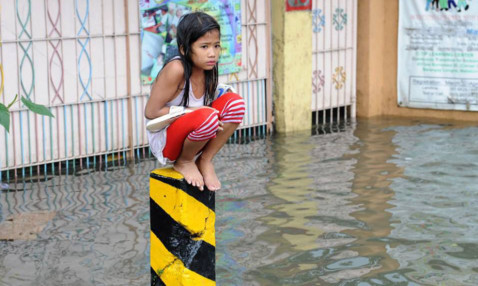
A Scots cameraman has described the devastation in the Philippines after one of the most powerful storms ever hit the Pacific islands.
Thousands of people are feared dead and 750,000 more have been made homeless after Typhoon Haiyan swept through the region over the past few days.
Ian McLean, originally from Helensburgh, witnessed first-hand some of the destruction caused by the storm.
He described how certain areas of the country have been totally devastated.
“The worst hit areas were the eastern island of Leyte and the coastal city of Tacloban,” explained Ian.
“There are around 200,000 people there and, as far as I can tell, the area has been completely flattened.
“Disaster agencies are struggling with this. There’s no way to get to Leyte, so the people there will have to wait for relief. I’ve worked as a cameraman for 20 years and I’ve never seen anything like this.”
Ian faces an anxious wait to find out if friends living in some of the devastated areas have survived.
“Communications are almost non-existent at the moment,” explained Ian from his home in Cebu City, close to where the storm hit.
“There are no phonelines or internet in the area to check if anyone is OK. For all we know, our friends in the worst-hit areas could be dead.”
Ian explained how the storm came at the worst time for the impoverished region, following last month’s earthquake in Bohol, which claimed the lives of 222 locals.
He added: “The earthquake was terrifying. And now there’s this.
“People in those regions do not have much. This will be devastating to them.”
Nearly 300,000 locals displaced from their homes by the were living in temporary accommodation when Typhoon Haiyan hit.
The category-5 super typhoon, scoured the northern tip of Cebu province and headed northwest towards Boracay island, both tourist destinations, after lashing the central islands of Leyte and Samar with 170mph winds and 19ft waves.
So far nearly a million people across the Philippines have been made homeless.
Typhoon Haiyan one of the most powerful storms ever to make landfall is now bearing down on Vietnam, where tens of thousands are being evacuated.
Government agencies were struggling to reach those affected by the disaster.
Philippines Interior secretary Max Roxas said it was too early to know how many people had died in the storm. He added: “The rescue operation is ongoing, we expect a very high number of fatalities as well as injured.
“All systems, all vestiges of modern living communications, power, water all are down. Media is down, so there is no way to communicate with the people in a mass sort of way.”
One Tacloban resident said he and others took refuge inside a parked Jeep to protect themselves from the storm, but the vehicle was swept away by a surging wall of water.
“The water was as high as a coconut tree,” said 44-year-old Sandy Torotoro, a bicycle taxi driver. “I got out of the jeep and I was swept away by the rampaging water with logs, trees and our house, which was ripped off from its mooring.
“When we were being swept by the water, many people were floating and raising their hands and yelling for help.
“But what can we do? We also needed to be helped,” Torotoro said.
l The Red Cross has launched an appeal for victims at www.redcross.org.uk/typhoonappeal

Enjoy the convenience of having The Sunday Post delivered as a digital ePaper straight to your smartphone, tablet or computer.
Subscribe for only £5.49 a month and enjoy all the benefits of the printed paper as a digital replica.
Subscribe